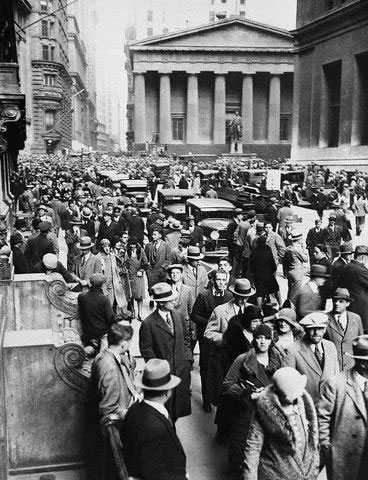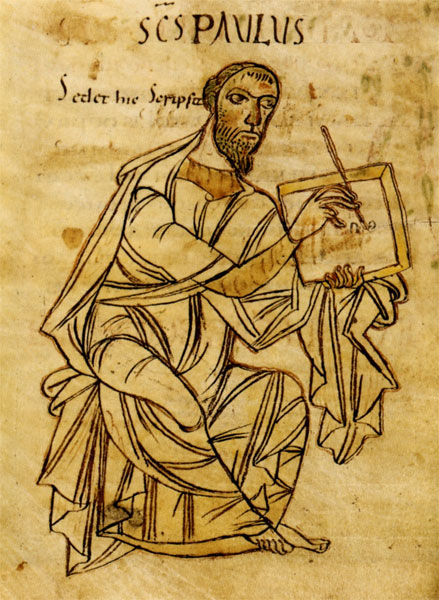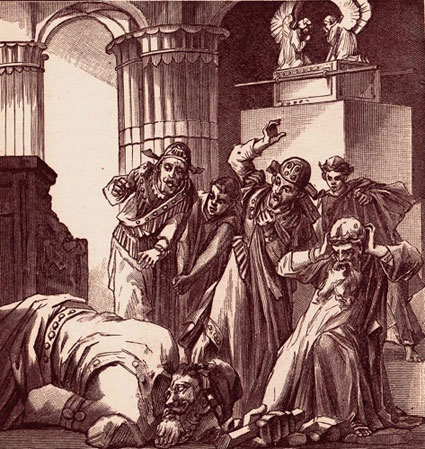Jan
13
2010

“Peter came to Him and said, ‘Lord, how often shall my brother sin against me, and I forgive him? Up to seven times?’ Jesus said to him, ‘I do not say to you, up to seven times, but up to seventy times seven.’” (Matthew 18:21-22)
Genesis 4 seems to contain two “feast” cycles. Near the end of the first, at “Atonement”, the Lord set a mark upon Cain to protect him from vengeance. As on the Day of Covering after Adam’s sin in Eden, the full weight of the law was withheld. Cain complained that his “liability” was greater than he could bear. Cain was covered but he still went from the presence of the Lord, as the goat which carried the sins into the wilderness. It seems Cain despised mercy.
Just as the Lord and the Land were two witnesses against his crime, he now fled from the face of the Lord and the face of the Land. Only the High Priest could face God, standing in the Veil, the firmament between heaven and earth. Abel was the true facebread, the authorised priest. [1]
Continue reading
6 comments | tags: Abel, Abraham, AD70, Atonement, Azal, Cain, Esau, Genesis, Herod, Jacob, Lamech, The flood | posted in Biblical Theology, The Last Days
Jan
6
2010
or Zedekiah and the Dragon

“…if the Lord creates something new, and the ground opens its mouth and swallows them up with all that belongs to them, and they go down alive into Sheol, then you shall know that these men have despised the Lord.” (Numbers 16:29-30)
Daughter Jerusalem kept up an outward show of respectability, but under her Temple veils and military skirts her legs were open for anyone. [1] In a vision, Ezekiel dug a hole through this wall of “whitewash” as a legal witness to her crimes against the Covenant.
Continue reading
Comments Off | tags: Compromise, Covenant curse, Ezekiel, Flood, Haman, Herod, Jeremiah, Revelation, Zedekiah | posted in Biblical Theology, The Last Days
Dec
25
2009

Just watched The Nativity Story with our seven-year-old son (the girls have seen it). Bawled my eyes out at many points, particularly now that I have a better understanding of the typological significance of many of the events since I last saw it.
Continue reading
Comments Off | tags: Christmas, Film, Herod | posted in Biblical Theology
Dec
18
2009
or The Crash of AD70

Now a river went out of Eden to water the garden, and from there it parted and became four riverheads. The name of the first is Pishon; it is the one which skirts the whole land of Havilah, where there is gold. And the gold of that land is good. Bdellium and the onyx stone are there. The name of the second river is Gihon; it is the one which goes around the whole land of Cush. The name of the third river is Hiddekel; it is the one which goes toward the east of Assyria. The fourth river is the Euphrates. (Genesis 2:10-14)
After the Herod and Shylock post, I had one complaint that the Worship as Commerce tag didn’t really do what it said on the tin, so I hope to capture it (briefly?) here. Now, where to start? As James Jordan explains, the idea begins in Eden.
Continue reading
1 comment | tags: AD70, Amalek, Gehenna, Genesis, Gnosticism, Herod, High Priest, Isaiah, Manna, Moses, Numbers 5, Revelation, Solomon, Temple, Worship as commerce | posted in Against Hyperpreterism, Biblical Theology, Christian Life, Creation, Ethics, Quotes, The Last Days, Totus Christus
Dec
16
2009

or Cooking the Golden-Egg Goose
Gary North has a free course on reducing your debt. Part of the plan is an application of the 5-point Covenant structure. Basically, God calls a man, gives him a job to do, and returns at the end to assess the man’s work. North refers to the parable of the talents in Matthew 25:
Continue reading
2 comments | tags: Dominion Theology, Economics, Gary North, Herod, Revelation, Worship as commerce | posted in Biblical Theology, Christian Life, Quotes, The Last Days
Dec
8
2009

I say then, has God cast away His people? Certainly not! For I also am an Israelite, of the seed of Abraham, of the tribe of Benjamin. God has not cast away His people whom He foreknew. Or do you not know what the Scripture says of Elijah, how he pleads with God against Israel, saying, ”LORD, they have killed Your prophets and torn down Your altars, and I alone am left, and they seek my life”? But what does the divine response say to him? “I have reserved for Myself seven thousand men who have not bowed the knee to Baal.” Even so then, at this present time there is a remnant according to the election of grace. Romans 11:1-6
Romans 11 is one of those watershed passages. How one interprets it depends on one’s “plan of the ages” paradigm. If you haven’t read James Jordan’s The Future of Israel Re-examined, you need to. Due to its ramifications for interpretation of much of the New Testament, I believe it should be recognised as one of the most important writings of our time. It puts Romans, and especially chapters 9-11, fairly and squarely within a first century context. All would be fulfilled before AD70. God would make “a short work” in the Land. And He did.
It also helps with the interpretation of Revelation. Christ was a new Moses, just as Elijah was. He ascended and gave a double portion of His Spirit to the church as Elisha. The new body witnessed to Gentiles to provoke the hard-hearted Jews to jealousy. This has nothing to do with our day. It was a process confined to the end of the Old Covenant.
Continue reading
Comments Off | tags: Balaam, Hermeneutics, Herod, James Jordan, Jezebel, Paul, Romans | posted in The Last Days
Nov
16
2009

“The LORD will strike you with the boils of Egypt, with tumors, with the scab, and with the itch, from which you cannot be healed.” Deuteronomy 28:27
The Bible matrix pattern brings out some interesting parallels. Step 5 is about a military multitude in unity after being tested under the Law of God. It is Deuteronomy. It is Trumpets. It is the swarms of fish and birds on Day 5. It is the step of plagues and plunder. It is the step where Jesus tells His disciples they will now need both swords and moneybags.
Continue reading
Comments Off | tags: Ark of the Covenant, Bible Matrix, Egypt, Eli, Herod, Sodom | posted in Biblical Theology, The Last Days
Nov
3
2009
or Every Knee Shall Bow

Day 1
So, Adam fouled the first Sabbath. He failed to be Light.
Day 2
Cain made a false exodus (with Abel as the Passover lamb) and went to “worship in the wilderness.” God marked him as a “covering.” Being “barren”, Cain built a city as a covering, but it was just like Adam’s figleaves. It was a phony firmament, a fabricated Covenant, a city built on the wrong sort of blood.
Day 3
His offspring built a counterfeit Tabernacle – in opposition to the worship at the Gate of Eden. This was a false Land, a false mountain, like Mount Gerizim became to the Samaritans. Lamech, as a false Moses, “ascended” not as a Lamb slain, but as an accuser, the incarnation of the serpent. But someone true ascended as Firstfruits: Enoch.
This brings us to Day 4. As in the Garden, and as in Israel’s wilderness, the test was harlotry.
Continue reading
Comments Off | tags: Abel, Babylon, Cain, Egypt, Enoch, Genesis, Herod, Incense Altar, Lamech, Noah, Satan, Seth, Sodom | posted in Biblical Theology, The Last Days
Oct
24
2009

“…all drank the same spiritual drink. For they drank of that spiritual Rock that followed them, and that Rock was Christ.” 1 Cor 10:4
There is a well-known Australian children’s novel called The Nargun and the Stars based on an aboriginal legend. The Nargun is a living creature but it looks like a big rock. It doesn’t move much, but it when it does it is ferocious.
What is Paul going on about here? Discounting the various Jewish fables and Christian legends surrounding both the original wilderness texts and Paul’s words here, what is his meaning? Could the structure of the passage give us a clue?
Continue reading
2 comments | tags: Corinthians, Herod, Literary Structure, Numbers 5, Paul | posted in Biblical Theology, The Last Days
Oct
8
2009
Evil Eve: The Harlotry of the First Century sons of Aaron
 The Lord “called” Adam as Day 1, giving him one law (light). He divided him as Day 2 and built Eve as a Holy Place, a firmament to be filled with stars (godly offspring). As Day 3 He made a new covenant and married them, the first nearbringing. Adam as the Bronze Altar (dust elevated from the Land) then became the first High Priest, the Table. In his obedience, together they prefigured totus Christus.
The Lord “called” Adam as Day 1, giving him one law (light). He divided him as Day 2 and built Eve as a Holy Place, a firmament to be filled with stars (godly offspring). As Day 3 He made a new covenant and married them, the first nearbringing. Adam as the Bronze Altar (dust elevated from the Land) then became the first High Priest, the Table. In his obedience, together they prefigured totus Christus.
Day 4 follows. As Adam represented singular light, Eve was plural light. She was the holy fire on the altar, the glory of Adam. [1] Day 4 is the Lampstand. Day 4 is also the wilderness. If Eve was seduced, it was because Adam’s priesthood was corrupt. There was strange fire on the altar, the biblical theme of harlotry. In the garden, the strange fire was the false lightbearer who filled the “firmament” with darkness.
With that background, look at how this plays out in Daniel 7. It also supports James Jordan’s assertion that the fact that the beast’s body is “feminine” carries some importance. [2] The false church is the body of totus diabolus, the locust swarm gathered as a tabernacle by the fallen head. Daniel seven is the history of the first century church as the Woman in the wilderness. But the faithfulness of the new Adam brought an end to the priesthood of the sons of Aaron.
Continue reading
Comments Off | tags: Altar, Daniel, Firstfruits, Herod, James Jordan, Lampstand, Tabernacle, Totus Diabolus | posted in Biblical Theology, The Last Days, Totus Christus



































